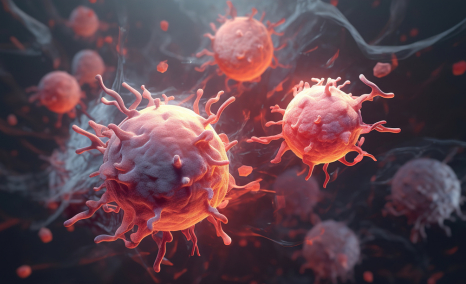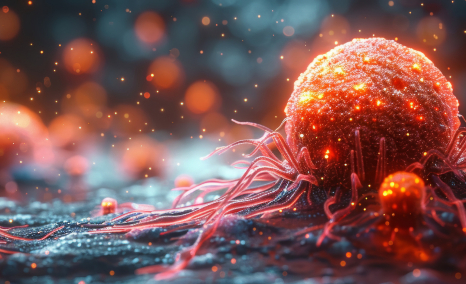The Rise of Peptide Drug Conjugates: A Promising Approach for Drug Delivery
Feb 19, 2025
Table of Contents
Peptide drug conjugates (PDCs) represent a groundbreaking approach in targeted therapy, offering a powerful strategy for treating diseases, particularly cancer. Peptide drug conjugates are a class of biopharmaceuticals that combine a therapeutic peptide with a cytotoxic or biologically active drug. The peptide serves as a targeting moiety, enabling the conjugate to selectively bind to specific receptors or biomarkers on the surface of target cells, such as cancer cells.
Once the peptide binds to its receptor, the conjugated drug is delivered directly into the target cell, where it exerts its therapeutic action. The conjugation of peptides with drugs is typically achieved using a linker molecule that ensures the stability of the conjugate in circulation while allowing for the release of the drug inside the target cells.
Downloads
Article in PDF
Recent Articles
- Now, Nanoparticles for Cancer Treatment
- Golcadomide and Rituximab Combo Unveils Promising Efficacy in Heavily Pretreated Relapsed/Refract...
- LumiThera’s US LIGHTSITE III Trial; First Patient Enrolled in Vascular Closure Device Study of Te...
- Vivos Therapeutics ‘s DNA Oral Appliance for the Treatment of OSA; Arthrex’s TightRope Implant fo...
- BGB-16673 Breakthrough: A Tolerable Triumph in Rapid Clinical Responses for Relapsed/Refractory B...
Advantages of Peptide Drug Conjugates
One of the most compelling advantages of peptide drug conjugates is their targeted delivery of therapeutic agents. The peptide component of a PDC is designed to bind specifically to receptors or antigens that are overexpressed on target cells, such as cancer cells, ensuring that the drug is delivered directly to the site of disease. This highly selective targeting significantly reduces the exposure of healthy cells to the toxic drug, thereby minimizing off-target effects and reducing the overall systemic toxicity commonly associated with traditional chemotherapy.
In addition to reducing toxicity, PDCs offer the potential for reduced side effects. By focusing on the cytotoxic effect of the drug on diseased cells, PDCs avoid damaging normal, healthy tissues, which is a major limitation of conventional treatments like chemotherapy or radiation therapy. This targeted approach allows for higher doses of potent drugs to be used without compromising patient safety, leading to more effective treatment regimens with fewer adverse reactions. This improvement in the therapeutic index enhances the overall benefit-risk profile of the therapy.
Moreover, the ability to customize the payload of PDCs offers significant versatility. The conjugated drugs can range from small-molecule chemotherapeutics to biologics, such as immune-modulatory agents, enabling a wide array of therapeutic applications. This flexibility allows PDCs to be tailored for a variety of diseases, including cancer, autoimmune disorders, and even infectious diseases. With the potential to target different types of receptors and deliver various types of drugs, PDCs represent a highly adaptable platform for personalized medicine.
Finally, PDCs are seen as a promising solution to overcoming the challenges of chemotherapy resistance. Tumors often develop resistance to traditional chemotherapy through mechanisms like drug efflux pumps or changes in cell signaling pathways. Since PDCs utilize peptides that specifically target cancer cells, they can bypass many of these resistance mechanisms. Additionally, their targeted nature ensures that the therapeutic payload is delivered directly to the resistant cells, potentially overcoming some of the challenges posed by conventional chemotherapy and enhancing the overall efficacy of treatment.
Applications of Peptide Drug Conjugates in Cancer Therapy
Peptide drug conjugates are rapidly emerging as a promising solution for targeted cancer therapy. Cancer cells often express surface markers or receptors that are either overexpressed or uniquely present compared to normal cells. Peptides can be engineered to specifically bind to these receptors, enabling PDCs to deliver cytotoxic drugs directly to the tumor site, significantly improving the precision of treatment. For instance, peptides that target receptors like EGFR or HER2, commonly associated with specific cancer types such as lung or breast cancer, have shown great potential in preclinical and clinical studies. By delivering drugs directly to cancer cells, PDCs maximize the therapeutic effect while minimizing damage to surrounding healthy tissue.
In addition to their targeted action, PDCs offer an innovative strategy to overcome chemotherapy resistance, a major challenge in cancer treatment. Traditional chemotherapies often lose efficacy over time due to the development of resistance mechanisms, such as drug efflux pumps or alterations in drug targets. PDCs, however, can circumvent these mechanisms by selectively targeting cancer cells with peptides that bind to specific tumor antigens, enhancing drug delivery to resistant cancer cells. This selective targeting ensures that even resistant tumors are treated more effectively, potentially leading to better outcomes for patients who have exhausted other treatment options.
Moreover, the use of PDCs can reduce the side effects typically associated with conventional chemotherapy. By ensuring that cytotoxic drugs are delivered precisely to the cancerous tissue, PDCs minimize systemic exposure, which is a major cause of the severe side effects like nausea, hair loss, and immune suppression seen in chemotherapy. This improved targeting helps to reduce the toxic effects on healthy cells, thereby offering a more tolerable treatment option for patients, which can significantly improve their quality of life during treatment.
As the field progresses, researchers are also exploring the potential of combining PDCs with other therapies, such as immune checkpoint inhibitors or monoclonal antibodies, to further enhance therapeutic efficacy. By harnessing the power of both targeted drug delivery and immune modulation, these combination therapies could offer even more potent treatments, overcoming the limitations of single-agent therapies and leading to more comprehensive cancer care.
Peptide Drug Conjugates: Market Dynamics and Key Companies
The dynamics of the peptide-drug conjugates market are expected to change in the coming years. As per DelveInsight analysis, the peptide-drug conjugates market is expected to grow at a CAGR of 28.73% from 2025 to 2032, reaching USD 13.8 billion by 2032. The increasing global cancer cases are driving the demand for PDCs as targeted therapies, which offer greater effectiveness and lower systemic toxicity compared to traditional treatments.
The rising use of peptide-based drugs, known for their superior treatment results, biocompatibility, and ability to target specific tumor cells, further accelerates market expansion. Additionally, strategic partnerships between biotech firms, research institutions, and pharmaceutical companies are fostering innovation and speeding up the development of new PDCs. Ongoing advancements in peptide synthesis and conjugation technologies are expanding the therapeutic applications of PDCs, contributing to the overall growth of the market from 2025 to 2032.
Moreover, the active participation of key players such as Novartis AG, Oncopeptides AB, Cybrexa Therapeutics, Avacta Therapeutics, ProteinQure, Theratechnologies Inc., CBP, Soricimed Biopharma, NMS Group S.p.A., Mainline Scientific LLC., Bicycle Therapeutics, and others will also fuel the peptide-drug conjugates market.
Peptide Drug Conjugates: Challenges and Future Directions
Despite the considerable promise of peptide drug conjugates, several challenges must be addressed to maximize their clinical potential. One major hurdle is the stability of the peptide component in circulation. Peptides are generally susceptible to enzymatic degradation by proteases in the bloodstream, which can limit their effectiveness and half-life. Researchers are focused on developing more stable peptides through modifications such as incorporating non-natural amino acids or cyclizing the peptide structure to resist proteolysis. However, optimizing the balance between stability and target affinity remains an ongoing challenge.
Another significant issue is the potential for drug resistance. Just as with conventional therapies, cancer cells can develop mechanisms to evade the action of PDCs, such as altering the expression of target receptors or activating alternative signaling pathways. To overcome this, researchers are exploring combination therapies that pair PDCs with other treatments like immune checkpoint inhibitors or small molecule drugs, which may help prevent or delay the emergence of resistance. Additionally, improving the specificity of peptide targeting could reduce the risk of off-target effects and help enhance treatment efficacy.
The regulatory and manufacturing landscape for PDCs is also complex. Given their multifaceted nature, involving peptides, linkers, and cytotoxic drugs, producing PDCs at scale while maintaining consistency and quality can be challenging. Furthermore, regulatory agencies must assess the safety and efficacy of these conjugates, considering both the peptide and the payload components, which could require extensive clinical trials. Streamlining the production process and ensuring efficient manufacturing techniques will be crucial for the widespread adoption of PDCs.
Looking ahead, the future of PDCs is bright, with several exciting opportunities on the horizon. The potential for personalized therapies, where PDCs are tailored to an individual’s unique tumor biology or genetic profile, could revolutionize treatment strategies. Advances in artificial intelligence (AI) and machine learning may accelerate the discovery of new peptides and optimize the design of drug conjugates. Additionally, improving the understanding of peptide-receptor interactions and tumor microenvironments could lead to more precise targeting, making PDCs a cornerstone of next-generation precision medicine.

Downloads
Article in PDF
Recent Articles
- Golcadomide and Rituximab Combo Unveils Promising Efficacy in Heavily Pretreated Relapsed/Refract...
- Chemotherapy as a treatment for Cancer?
- Cilta-cel Demonstrates Prolonged and Deep Responses across Advanced Treatment Lines, Signifying P...
- Minimal Residual Disease (MRD) Testing: A Path to Cure Cancer?
- New cancer drug tested in mice may benefit certain leukaemia patients



